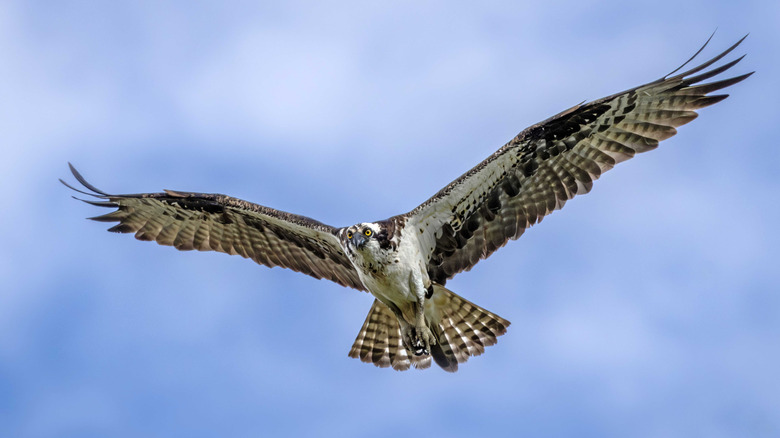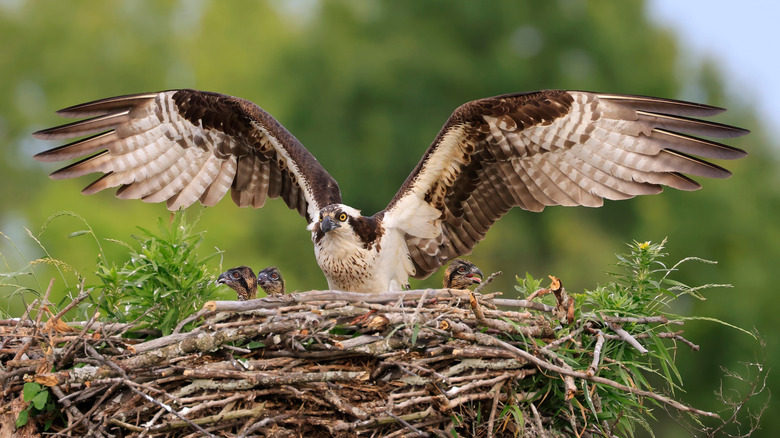A Rare Bird Of Prey Saved In Iowa Was Hiding A Big Secret
The state of Iowa is home to numerous green spaces, with 70 parks and recreation areas dedicated to allowing its residents to enjoy the outdoors. For birdwatchers, Iowa offers an impressive checklist of 432 species to find, including the state bird, the American goldfinch. Yet one of the rarer finds in Iowa is an osprey, with only 50 nests reported in the state in 2024. For two local bird watchers in Iowa, finding an osprey in need was a unique find. Yet, a surprise came when they learned it was a 19-year-old who played a crucial role in helping the population recover in the area.
The couple discovered the osprey on a road with an injured wing, as reported by the Des Moines Register on June 6, 2025. After shielding the bird from oncoming traffic, members of Iowa Bird Rehabilitation, a volunteer-run rehabilitation center, arrived to retrieve the injured bird of prey. Later, while checking its tag, they found that the bird was 19 years old and had previously been part of an Iowa reintroduction program. The aged female had initially been part of conservation efforts back in 2006. Since ospreys generally only live to be around 10 to 12 years old, finding a 19-year-old specimen that played an essential role in helping rebuild the population in the area proved to be a remarkable find.
Tagged as Y8, the osprey was previously given the opportunity to be counted among the best bird mothers in the animal kingdom, sheltered in a hack tower that allowed it to raise its young away from the eyes of predators. Decades later, being found, saved, rehabilitated, and returned to the wild again serves as a remarkable testament to the conservation efforts for the osprey in Iowa.
The sad history of the osprey in the US (and its successful rehabilitation in Iowa)
Pollution caused by human activity can harm nature, a truth that is often understated and underreported. This is evident in recent stories, such as the heartbreaking cases of California's dolphins and sea lions attacking people. However, the story of the osprey illustrates how conservation efforts can pay off and help threatened species rebound. From the 1950s to the 1970s, the osprey population experienced a sharp decline due to the use of the synthetic insecticide dichloro-diphenyl-trichloroethane (DDT), which caused eggs to thin and resulted in a high mortality rate among chicks. After the chemical was banned in 1972, the osprey population began to recover, although the bird of prey is still listed as endangered or threatened in some states.
The program in Iowa is notable for its efforts, as the osprey had not nested in the area since colonial times. The initiatives that began in 1997 have allowed this bird of prey to find shelter and expand its range, which it would not have achieved on its own. Y8 was deemed integral to the efforts to enhance reintroduction initiatives after being introduced to the Lake Red Rock tower location in 2006, where she was reported to have raised three chicks before departing in 2014.
As society continues to threaten wildlife through climate change and pollution, a success story highlighted by the unexpected discovery of an osprey in Iowa serves as a reminder of the importance of ongoing conservation efforts and their potential for success. For more stories on remarkable finds in the wild, check out the rare eagle that appeared in North America for the first time.

